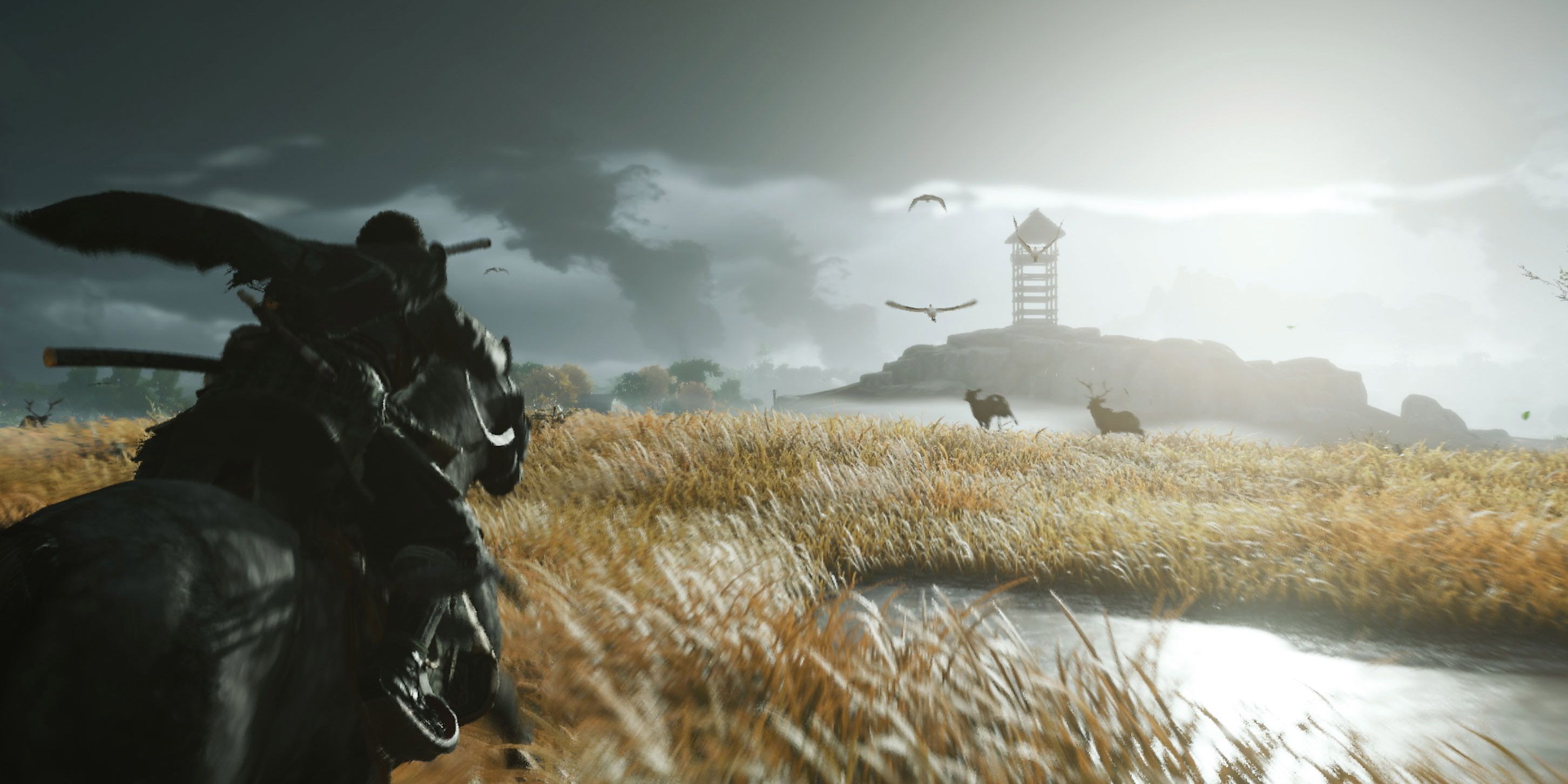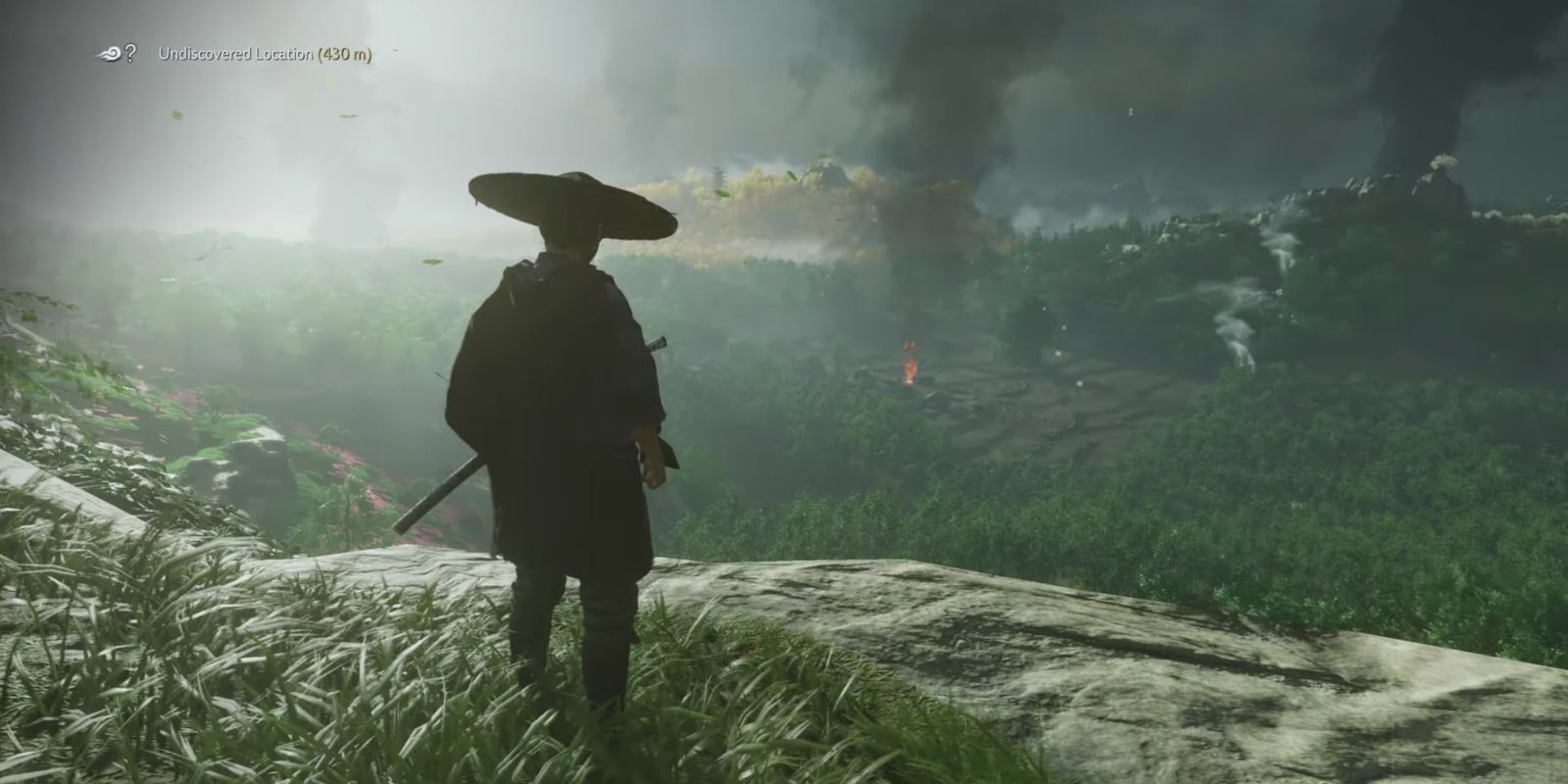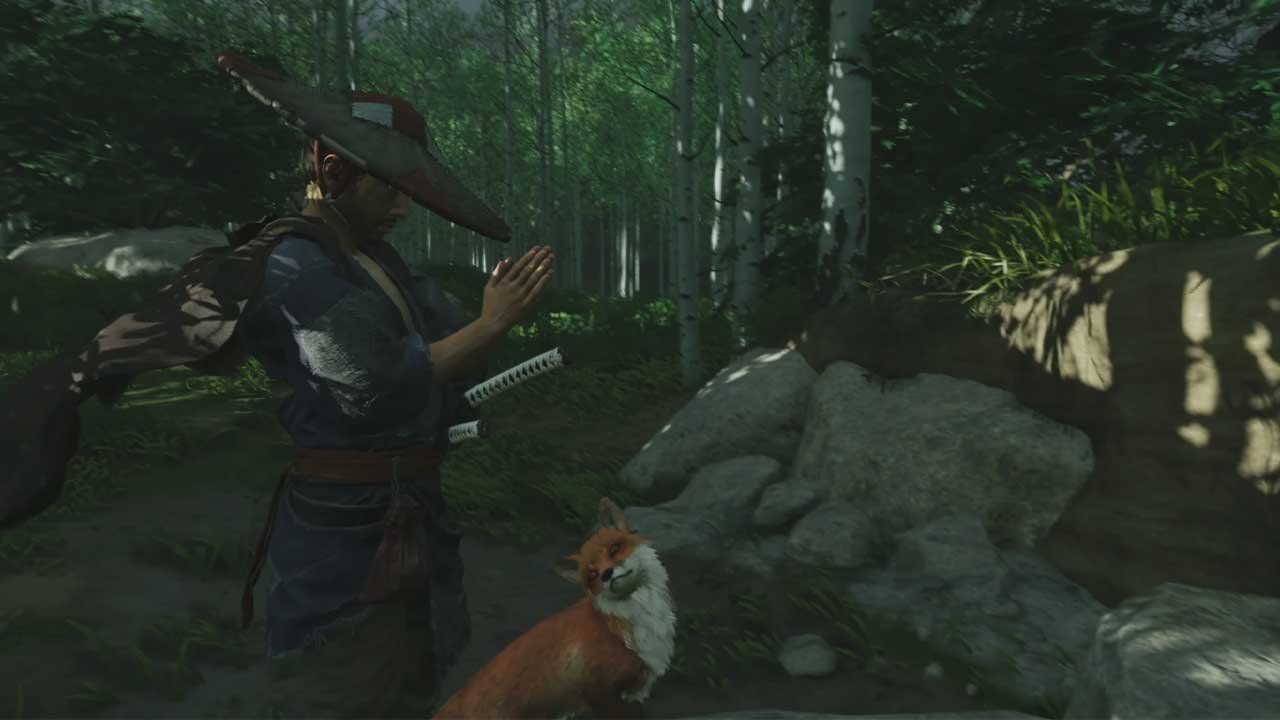Ghost of Tsushima's recent State of Play demonstrates one core aspect of open-world the game gets right: the exploration. The video features many gameplay mechanics of the upcoming game, including combat and customization, but one which particularly stands out is its approach to how players will navigate the island of Tsushima.
From the outset, one crucial difference between Ghost of Tsushima and most other open-world games is glaringly obvious, that being the lack of many user interface elements. The heads-up display is minimal, with information popping in and out of the screen when it's relevant instead of inadvertently breaking immersion by staying on the screen.
Unlike in other games, it appears the HP bar, as well as other combat-specific information, only appears during combat situations. This cleaned up UI does more than just keep the screen from getting cluttered; it also helps the play stay immersed in the beautiful sceneries of the open-world.
Notably, the game also gets rid of other invasive user interface components, such as the mini-map, waypoints and other features that hold the player's hands during exploration. Ghost of Tsushima still features many of the other typical open-world navigation tropes, such as riding a horse, fast travel or marking on a map. But instead using a glowing point of light in the distance or dotted lines on a map to tell players where to go next, it uses more clever mechanics to help guide the player.
One such mechanic is the guiding wind. Once an undiscovered area has been marked on the map, players have the option to call for a guiding wind, which will blow in the direction the player will want to travel to make it to the desired destination. This feature is completely non-invasive. Players can choose not to use it if they's prefer to navigate the world by themselves, and those who choose to use it won't be distracted from the environment in the way a mini-map takes attention away from the world itself.
The game features other creative ways to encourage players to explore Tsushima, including different methods to find hidden areas they may have otherwise missed. Players will want to keep an eye out for visual clues that may reward them for being attentive and curious. For example, a smokestack in the distance may hint at an NPC in need of help, which could make for an intuitive way of finding side quests instead of randomly barging into every house hoping for a mission.
The video also shows off environmental hints, such as oddly-shaped trees and animals that look excited to show the players something. Following a bird may lead the players to an unknown point-of-interest, or a fox may guide them to a hidden shrine. All of these world design choices look to be carefully picked to encourage and reward discovery, making the exploration aspect more engaging than what the usual open-world games manage.
These immersive features are important and refreshing. Games that manage to successfully marry gameplay mechanics with the world of the game are few and far between. Dark Souls pulled it off, as re-spawning is explainable within the lore of the series, as did The Witcher 3, where some UI elements can be attributed to Geralt's Witcher senses. This is called diegetic design, where elements exist within the world and not just in the meta design of the game. Ghost of Tsushima does something similar, with all of its exploration mechanics possibly a references to Shintoism, which could play a role in the game.
Shintoism is a Japanese religion that emphasizes a symbiotic relation between everything, including man, as part of nature. The very elements of nature itself are godly spirits called Kami. This can be seen in the naming of the historical typhoons called Kamikaze (meaning divine winds) that are said to be the cause of the failure of the Mongol invasion of Japan.
Ghost of Tsushima is set during this very period, when the Mongols attempted to take over Japan, particularly the island of Tsushima. Having natural elements guide the player suggests Shinto themes will be present throughout the game. We've already seen faith play a role, as protagonist Jin Sakai pays his respects as shrines to receive additional charm slots. By integrating the game's narrative themes with gameplay mechanics, Sucker Punch has managed to outdo itself with this promising game.



